Enveloped in the heart of the Caribbean Sea, the island nation of Dominica basks in its distinguished appeal, a unique cocktail of vibrant culture, rich history, and stunning geography. This verdant paradise, unabashedly adorned with lush rainforests, exhilarating wildlife, and invigorating topography, offers the quintessential Caribbean experience like no other. With an illustrious lineage stretching back to pre-colonial times and a cultural tapestry woven with local traditions, cuisines, and languages, Dominica is an undeniable magnet for those seeking to immerse themselves in the ways of the island.
Understanding Dominica: Geography, Culture, & History
Dominica: An Island Jewel in the Caribbean Sea
Dominica is a beautiful paradise island nestled between two French territories in the Caribbean Sea: Guadeloupe to the north and Martinique to the south. It lies approximately halfway along the Eastern Caribbean archipelago, and is affectionately referred to as the “Nature Island” due to its spectacular, lush and varied flora and fauna, and its myriad of rivers and waterfalls. Also, it’s quite unique for its topography, featuring a volcanic landscape that gently slopes to meet the coastline.
Prominent landmarks in Dominica include the Trois Pitons National Park, a UNESCO World Heritage site, with its three titanic peaks, and the Boiling Lake, the second-largest hot spring in the world. Known for its many natural parks and wildlife reserves, Dominica harbours many species of plants and animals unique to this region. The major cities of Roseau and Portsmouth exhibit the island’s European heritage in their architecture, streetscapes and city life.
Cultural Tapestry of Dominica
Every aspect of Dominican life is steeped in the rich traditions of its indigenous people and the multitude of communities that have found a home in its coastline over the centuries. The official language is English, but a majority of Dominicans converse in Antillean Creole, a blend of French, English, Spanish, and African languages.
This blend of cultures is also reflected in the island’s food, creating a vibrant and unique Dominican cuisine that combines indigenous Kalinago, African, and European culinary traditions in dishes like callaloo, a hearty soup made from the local dasheen leaf, and stuffed crab backs.
Traditional music and dance, too, are cherished practices that have been handed down through generations and are still alive today. These include bélé, quadrille and jing-ping bands that create vibrant rhythms with hand drums, accordions and tambourines, narratives of the island’s past.
An Introduction to Dominica: Tracing Its History From Indigenous Origins to Contemporary Era
Originating from its initial settlement by anthropological groups such as the Ortoroids, Dominica moved through stages of occupancy by the Arawaks, before finally becoming home to the Kalinago people, or Caribs. The island retained its strength of Carib occupancy well after its discovery by Columbus in 1493. It was the Caribs who coined the name Wai’tu kubuli, translating to “Tall is her body”, adeptly describing the island due to its topographical highlands.
Over the course of the acclaimed colonial era, Dominica swapped hands between the French and the British multiple times. Despite the continuous attempts, the Kalinago nobly resisted complete colonization, resulting in Dominica remaining as one of the scarce areas where indigenous inhabitants remain in significant numbers, proudly maintaining a five thousand acre territory on the northeastern coast.
Dominica fell under British colonization in 1763 and managed to assert its independence only in 1978, two centuries later. Weathering the storm of economic challenges and natural calamities, Dominica has emerged as a beacon of fortitude. Its people, culture, and enchanting natural offerings still flourish, inviting global visits. Present-day Dominica calls upon travellers from every corner of the world to witness its historical markers, partake in exuberant festivities, sample its varied culinary delights, and delve into the island’s deep-seated historical and cultural inheritance.
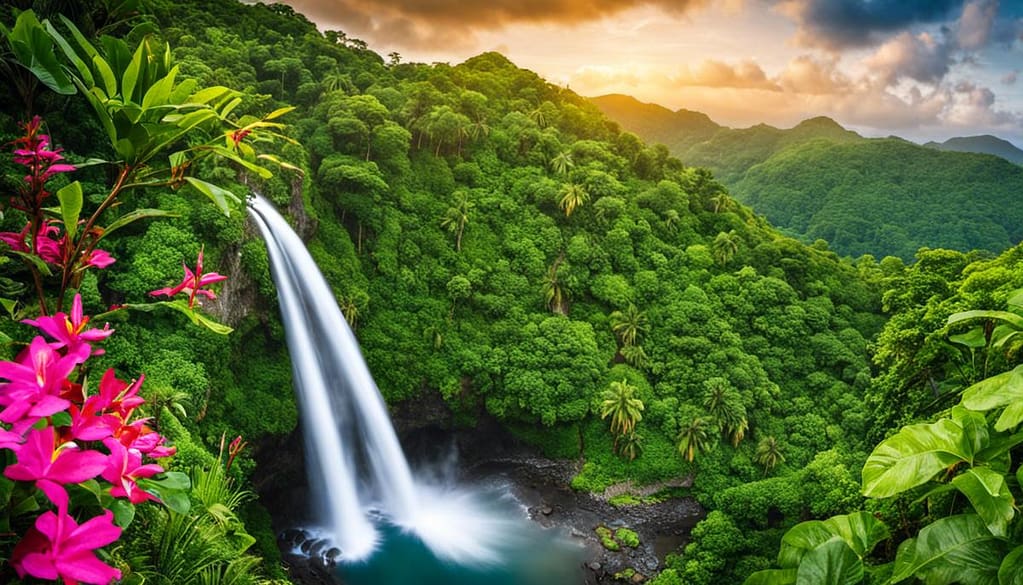
The Best Time to Visit Dominica
Identifying the Ideal Time to Visit Dominica
Whilst envisaging a visit to Dominica, weather and seasonal local events warrant due consideration. Dominica experiences a tropical weather pattern, maintaining consistently pleasant temperatures in the range of 25 to 30 degrees Celsius all year round. Nevertheless, the island does have a marked dry spell and a rainy season, with the latter often overlapping with the well-known Atlantic hurricane season.
The dry season of Dominica typically spans from December to May, thus offering an opportune time for travel enthusiasts preferring comparatively sunnier climates. During these months, warm daytime temperatures are complemented by cooler nights and low humidity levels. The period also coincides with heightened tourist activity, as many international visitors aim to substitute colder winter temperatures for a sunny holiday.
The wet season, spanning June to November, introduces humid conditions, accompanied by frequent heavy rains and the potential for hurricanes. Regardless, the mesmerising natural beauty of the island remains undiminished, attracting visitors undeterred by the climatic challenges. For some, the off-season advantages of lesser crowd volume and reduced accommodation costs may outweigh the cons.
Celebrating Culture: Dominica’s Local Festivities and Events
Dominica is home to a treasure trove of local events and festivals that greatly enrich any holiday visit. Notably, the annual Carnival springs to life in February, just before Lent, when the streets fill with vibrantly-coloured costumes, mesmerising parades, and the infectious rhythms of calypso music – an impressive spectacle that offers an immersive insight into the island’s richly diverse culture.
Simultaneously, the Dominica World Creole Music Festival is another significant event typically taking place in late October. Over a span of three days, this acclaimed festival puts the spotlight on Creole music genres from all corners of the globe, attracting both locals and international visitors in droves.
Meanwhile, outdoor enthusiasts have ample opportunities to commune with nature. May sees the Hike Fest, inviting explorers to set foot on the island’s unparalleled trails, while the July Dive Fest showcases Dominica’s sublime underwater marvels to both novices and seasoned divers alike.
Pivoting your holiday plans around these events can add depth to your Dominican experience, giving you a taste of the island’s distinct culture and breathtaking natural wonders. However, it’s worth noting that accommodations can get booked out quickly during festivity periods, and prices might be slightly higher than usual.
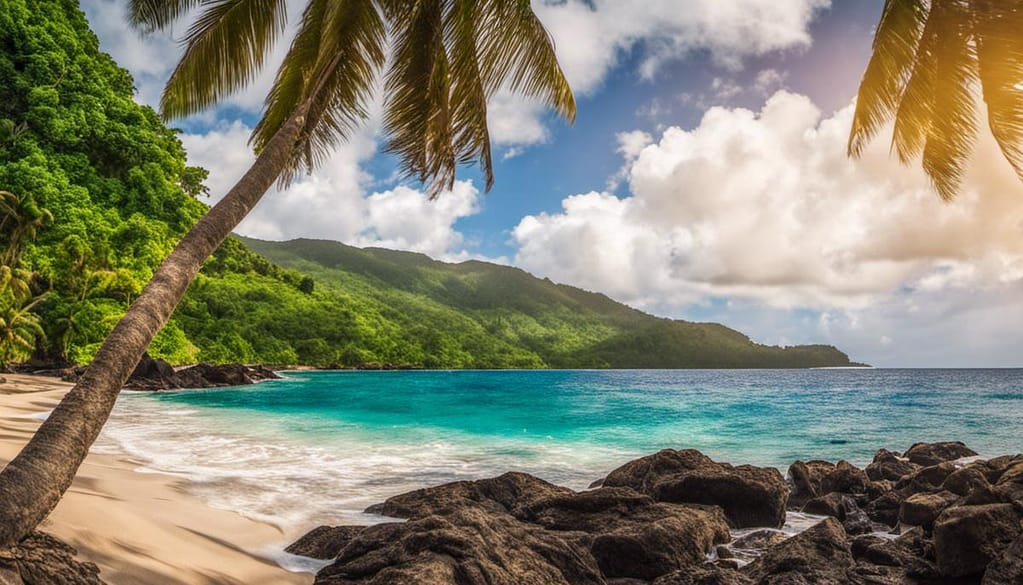
Top Outdoor Adventures and Attractions in Dominica
Embracing Nature: Dominica’s Extraordinary Outdoor Activities
Replete with bountiful natural treasures, Dominica offers a host of unforgettable outdoor escapades to adventurous spirits. Fondly referred to as the “Caribbean’s Nature Island,” this compact paradise is teeming with diverse activities, from invigorating hikes to immersive diving experiences and even wildlife encounters, making every sightseeing experience truly memorable.
Abode of Marvels: Morne Trois Pitons National Park
The Morne Trois Pitons National Park is the sparkling jewel of Dominica. A UNESCO World Heritage Site, it beckons outdoor lovers with dramatic gorges, spectacular waterfalls, and the iconic Boiling Lake. Venturing through its lush rainforests allows for an encounter with a vibrant collection of flora and fauna. This scenic refuge houses a variety of exotic bird species making it a haven for bird watchers.
Access to the park is relatively easy with welcoming staff available for assistance. The park-entry cost is affordable and the experience is invaluable.
Underwater Revelry: Champagne Reef
Among numerous diving sites in Dominica, the Champagne Reef stands out due to its exceptional geological feature. Here, divers can experience the unique sensation of swimming through warm bubbles, originating from volcanic activity beneath the sea floor. This underwater marvel also offers a rich display of colourful marine life, coral formations, and diving options for all skill levels.
Pre-dive preparation requires standard diving gear, which is readily available for rent at the spot. Safety is paramount and dive guide’s advice should always be followed.
Trial by Fire: Boiling Lake Hike
Considered one of the most challenging hikes on the island, the trek to the Boiling Lake is an epic journey for seasoned adventurers. Nestled in the Morne Trois Pitons National Park, this lake, filled with bubbling hot water, second largest of its kind in the world, is a sight to behold. The path takes explorers through varying terrain including tropical rainforests and steep rocky cliffs.
A local guide is mandatory for this hike, as the trail can be tricky to navigate. Sturdy footwear, water, and food are essentials. A good level of fitness and a sense of adventure are prerequisites.
Encountering the Wild: An Expedition into Dominica’s Fauna
In the heart of Dominica, amidst the abundant forests and crystal-clear rivers, thrives a plethora of enchanting wildlife; from vibrant parrots fluttering through the canopy to captivating yet elusive iguanas. A serene boat journey into the depths of the Indian River shall yield sights of herons and egrets flaunting their grace, and perhaps even a wild boar foraging along the riverbank.
To ensure an enriching experience, those keen on capturing these enchanting spectacles are advised to pre-book their tours. This not only heightens the chance of successfully encountering the fascinating fauna, but also assists in preserving the stability of these precious ecosystems. In the pursuit of adventure, the principles of safety and respect for nature should be treasured as much as the wildlife itself.
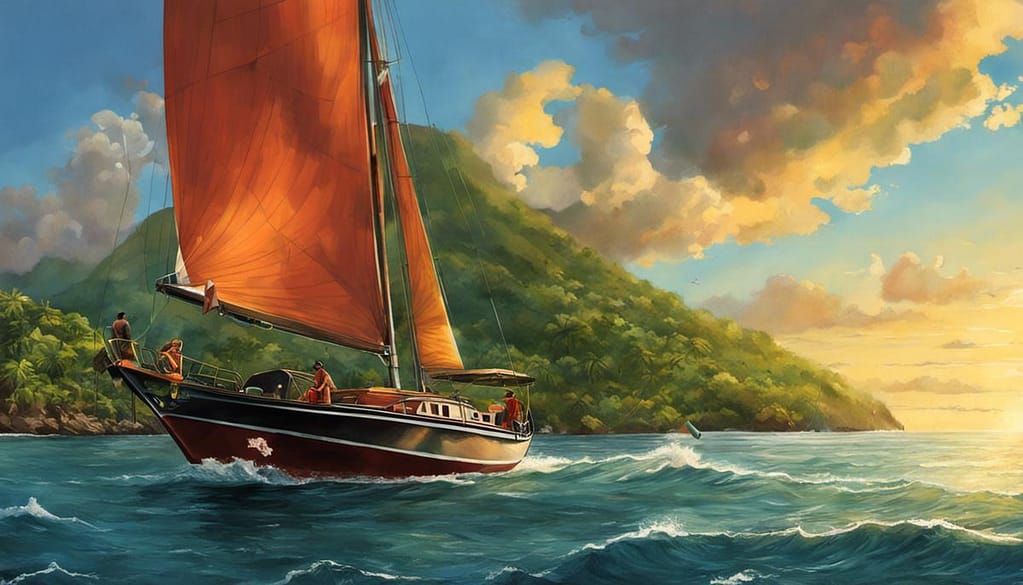
Accommodation, Dining, and Transportation in Dominica
Where to Stay: Exploring Dominica’s Accommodations
The shelters that nestle amidst Dominica’s breath-taking landscapes are as diverse as the terrains they occupy. From the gran9deur of luxury retreats and the chic allure of boutique hotels to wallet-friendly hostels and eco-lodges echoing Dominica’s ethos of conservation, every traveller’s taste and budget is catered to.
Luxury resorts, cocooned within rugged landscapes or skirting untouched beaches, offer their guests an indulgent escape. Boasting opulent rooms, contemporary facilities, striking vistas, rejuvenating swimming pools, seamless internet connectivity, sophisticated dining venues and expansive wellness centres, they exemplify island luxury inspired by the island’s magnificent gifts of nature.
For those travelling on a shoestring, the island hosts an array of hostels and guesthouses, promising comfort and warmth without breaking the bank. Despite their economical prices, these lodgings offer clean environs, essential amenities and occasionally, communal kitchens – a home away from home, indeed.
Travellers seeking a boundless connection with nature will find solace in Dominica’s eco-lodges and cottages. Placed within earshot of nature trails, cascading waterfalls and other natural splendours, they offer an immersive experience in the island’s rich biodiversity.
Dining in Dominica
Dominica’s food scene offers a unique blend of African, Carib, and Creole cuisines, spotlighting organic, locally-sourced ingredients. The island’s fertile volcanic soil puts fresh fruits, vegetables, and spices on every menu. Dining options range from upscale restaurants to laid-back local eateries and street food vendors.
Dominica’s culinary scene truly comes alive at the street food stalls and local markets. Local specialities include “mountain chicken” (actually frog legs), crayfish, “fungee” (a polenta-like dish), and “callaloo” (a leafy green stew). Look out for the “Titanic”, a popular fruit smoothie made with coconut, banana, peanuts, milk, and spices, and definitely try one of the local rum punches.
For an upscale dining experience, there are a few notable restaurants offering international cuisine with a Dominican twist. These establishments also incorporate local ingredients into their dishes, presenting them in an elegant and innovative fashion.
Transport Options in Dominica
If you’re planning a trip to Dominica, rest assured, as the island offers several ways to move around. Common modes of transport include public buses, hired cars, and taxis. It’s a small island, so you won’t need to traverse significant distances when sightseeing.
The majority of public travel is handled by minibuses or ‘buses’ which run regularly between the bigger towns and rural areas. The bus services are generally prompt, barring late evenings and Sundays. It’s quite an affordable means to travel and a great way to interact with the locals.
If you wish for more flexibility and leisure in your travel schedule, you can hire a car. Bear in mind, though, the narrow winding roads, steep ascents, and scant signposts might present a challenging drive. You’ll need a local driving permit which can be attained from car rental services.
As an alternate mode of transit, taxis service short distances inside towns and offer airport transfers. They cost more than buses, but the fares can be haggled.
Roseau, the capital, and a few other regions are quite conducive to walking. Many of the popular spots are within comfortable walking distances. Given the uneven pavements and hilly landscape, a pair of comfortable shoes is a good idea.
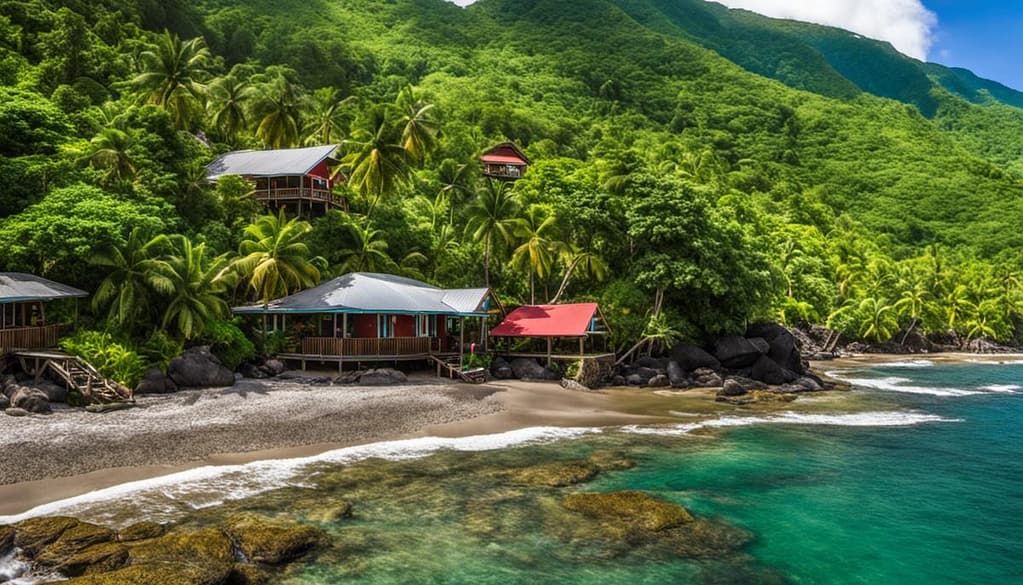
Rules, Regulations, and Tips for Travelling in Dominica
Visa and Immigration Protocols for Dominica
Dominica, nestled in the eastern Caribbean, lures tourists with its lush greenery, tropical rainforests, hot springs, and a rich cultural past. If you’ve set your sights on this slice of paradise, it’s important to acquaint yourself with the visa and immigration regulations. Generally, citizens from the European Union, United States, and Commonwealth countries can visit Dominica visa-free for a duration of six months. A valid passport and a return, or forward-bound ticket is required, nevertheless.
If you hail from a country that requires a visa to enter Dominica, you should approach a Dominican embassy or consulate in your homeland. The rules may vary, so it’s wise to check with the respective authority in your country.
Understanding the Local Laws and Customs
When travelling in Dominica, it’s critical to respect local laws, customs, and regulations. Smuggling drugs is a grave offence, punishable by substantial fines or imprisonment.
Dominicans enjoy a relaxed lifestyle, and the island has a distinct respect for nature and cultural traditions. Dress is generally modest, particularly when visiting churches or local villages. Regardless of your destination, strident conduct or display of excessive wealth can be perceived as insensitive.
Health and Safety Tips
In terms of health and safety, no vaccinations are compulsory to enter Dominica except yellow fever if travelling from an endemic area. However, recommended immunisations include Hepatitis A, Tetanus, and Typhoid. The island’s tropical climate warrants precautionary measures against mosquito-borne illnesses. Carry adequate repellents, and ensure to use screened windows or mosquito nets when possible.
Treated tap water is safe to drink in urban areas but boiling or treating water before consumption in rural regions is recommended. Dominica has a robust healthcare system with hospitals and clinics, but comprehensive travel insurance covering emergency evacuation is advised, as complex medical cases might require treatment abroad.
Despite Dominica’s relatively safe reputation, practising standard safety measures such as not leaving belongings unattended and avoiding isolated areas after dark can contribute to a worry-free vacation.
Recent Travel Advisories
Monitoring recent travel advisories issued by your home country’s foreign affairs office can provide updated safety information, potential security risks, natural hazards, and other unforeseen events, such as political unrest or health threats, specific to Dominica.
Travelling Responsibly
Dominica is fondly referred to as the “Nature Isle of the Caribbean” due to its commitment to eco-friendly tourism. Visitors are encouraged to respect the local environment by sticking to designated trails, refraining from littering, and responsibly disposing of waste.
Participating in community-based or sustainable activities helps support local economy and conservation initiatives. Purchasing locally produced goods, respecting cultural sites and artefacts, and engaging with residents in a culturally sensitive manner ensure you contribute positively towards preserving the natural charm and authenticity of the island.
In essence, a trip to Dominica should be embarked on with respect for its laws, customs, people, and environment. Implementing precautions regarding health and safety, being aware of updated travel advisories, and undertaking responsible travel practices will ensure a smooth and enriching travel experience.
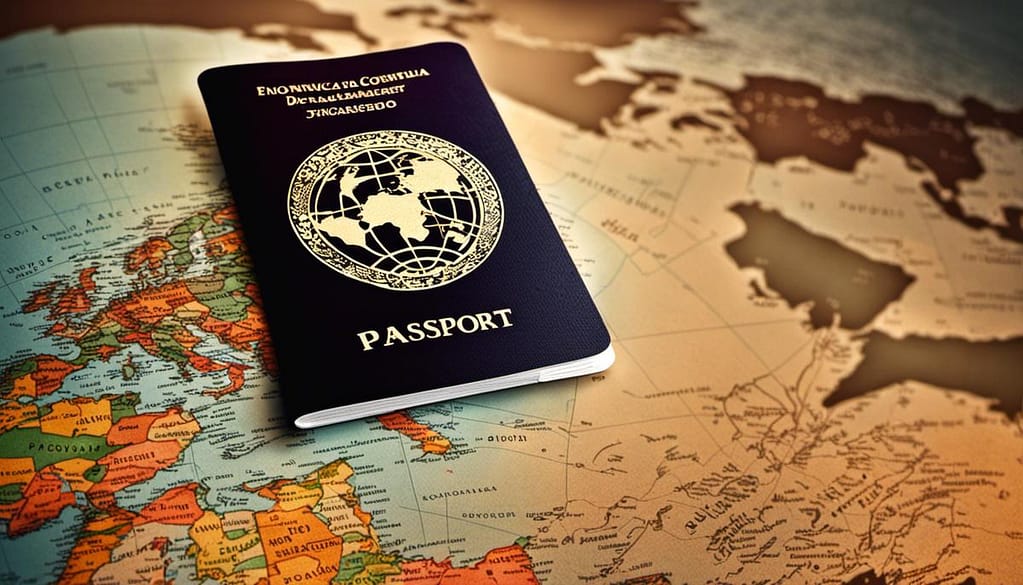
Whether you are an adrenaline seeker or a history buff, a gourmet or a culture enthusiast, Dominica affords an array of experiences to cater to varied cravings and interests. Navigate through its scintillating landscapes, dive into its scrumptious culinary scene, and embrace the innate hospitality of Dominicans. However, while revelling in its organic charm, it is crucial to be respectful of local customs, conscious of the prevailing laws, and heedful to health and safety guidelines to ensure a seamless journey. Remember, travel is not only about visiting a place; it’s about becoming a part of it, even if it’s only transient. Prepare ahead, explore with care, and take home memories etched with the indelible spirit of a captivating Dominica.

